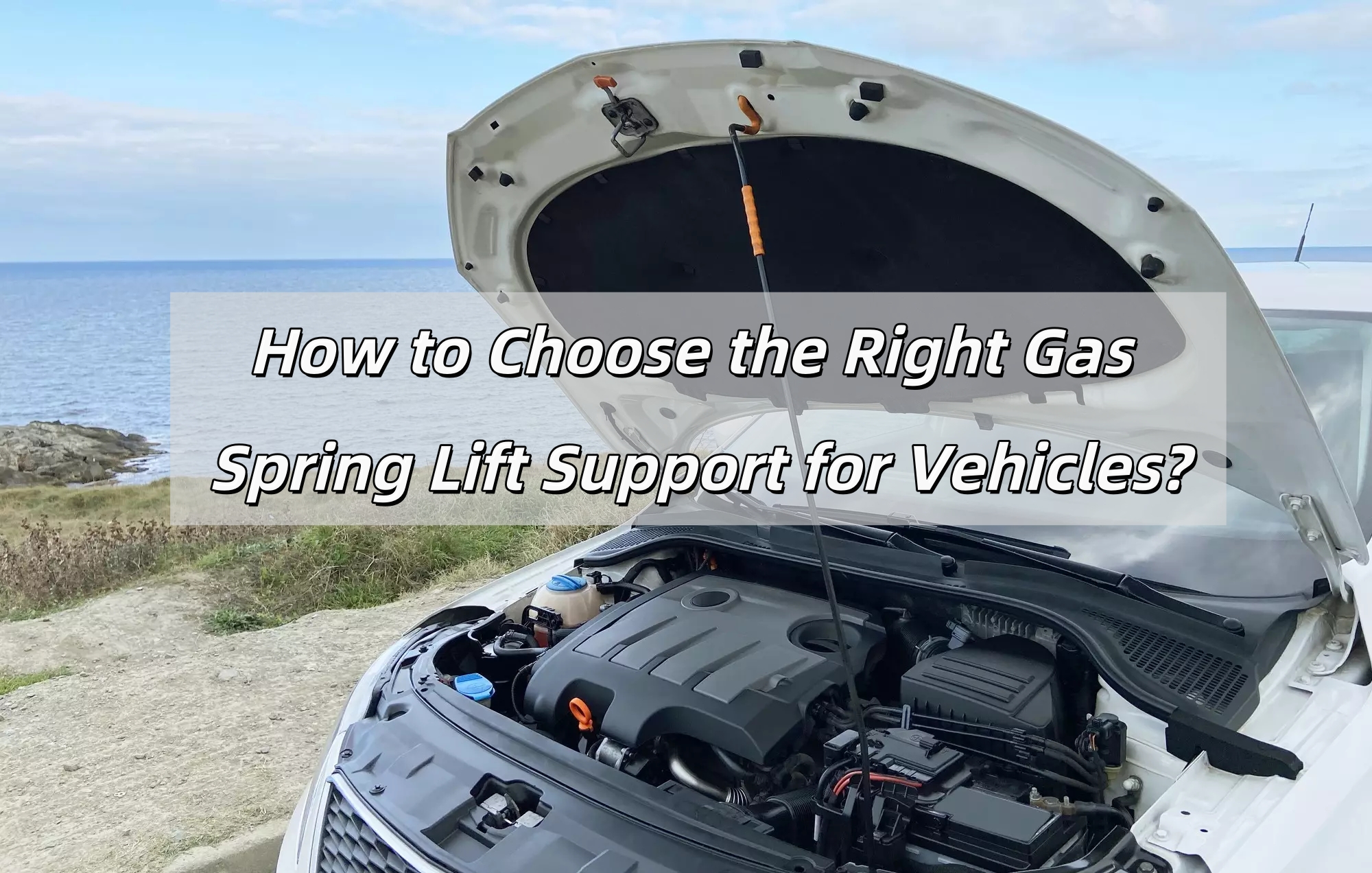When you open your car’s hood, trunk, or hatchback, the smooth lift and secure hold you experience isn’t just convenience—it’s engineering. That seamless motion comes from a gas spring lift support (sometimes called a strut). These small but powerful components are essential for safety, comfort, and functionality.
But not all gas springs are created equal. Choosing the right one for your vehicle can feel overwhelming with so many sizes, forces, and materials available. In this article, we’ll break down everything you need to know to make the right choice—whether you’re replacing an old strut or upgrading for better performance.

What Is a Gas Spring Lift Support?
A gas spring lift support is a sealed cylinder filled with compressed nitrogen gas. Inside, a piston rod moves up and down, creating pressure that assists with lifting and holding heavy panels. Unlike a mechanical spring, which relies on coiled steel, a gas spring provides smooth, controlled force with little effort.
In vehicles, gas springs are most commonly found in:
- Car hoods (bonnets)
- Trunks and tailgates
- Hatchbacks and liftgates
- RV storage doors and camper shells
- Specialized compartments (toolboxes, engine covers)
The benefits are simple but vital: ease of use, safety, and durability. Without them, opening a heavy panel could feel like lifting weights—or worse, the panel could fall and cause injury.
Step 1: Identify the Application in Your Vehicle
Your choice starts with where the gas spring will be installed. Each application has its own requirements:
- Hood Gas Springs: These struts allow you to work under the hood safely. If they fail, the hood can slam shut unexpectedly—a dangerous situation.
- Trunk or Tailgate Gas Springs: These support panels that often open upward. They need to hold steady even in windy conditions.
- Hatchback Gas Springs: Common in SUVs and compact cars, these need consistent strength to handle larger, heavier panels.
- Specialty Applications: RV doors, camper shells, tool compartments, and heavy utility boxes may require custom sizes or forces.
💡 Pro tip: Always check your vehicle’s manual or the part number on your old strut to confirm the correct application.
Step 2: Measure the Size and Force
One of the most common mistakes is buying a gas spring that “looks about right” but doesn’t match the original specifications. Here’s what you need to measure:
- Extended Length: The distance from one end to the other when the strut is fully open.
- Compressed Length: The total length when the strut is closed.
- Force Rating: Usually printed on the cylinder in Newtons (N) or pounds (lbs). This tells you how much lifting power it provides.
- End Fittings: Ball sockets, brackets, or eyelets must match your vehicle’s mounting system.
⚠️ If the force is too low, the panel won’t stay open. If it’s too high, you risk bending hinges or damaging the panel.
Step 3: Choose the Right Material
Not all environments are the same, and material matters:
- Standard Steel Gas Springs: Most cost-effective, suitable for everyday vehicles.
- Stainless Steel Gas Springs: Resistant to rust and corrosion, ideal for marine vehicles, humid climates, or outdoor equipment.
- Heavy-Duty Gas Springs: Built for larger SUVs, trucks, or specialized equipment that carry heavy panels.
If you live in a coastal or rainy environment, investing in stainless steel can dramatically extend the lifespan of your struts.
Step 4: Decide Between Lockable and Non-Lockable
For most cars, a non-lockable gas spring is enough—it lifts and holds the panel in place.
But in some cases, you may want a lockable gas spring, which allows you to stop and hold the panel at different positions. These are especially useful in:
- Adjustable camper shells
- Specialized storage compartments
- RVs and boats where you need variable positioning
Step 5: OEM vs. Aftermarket Options
When replacing gas springs, you’ll come across two main categories:
- OEM (Original Equipment Manufacturer): These are exact replacements, designed specifically for your vehicle make and model. They fit perfectly and match factory specifications.
- Aftermarket Gas Springs: These can be more affordable, available in custom lengths and forces, and sometimes even stronger than OEM parts.
Both are viable, but if you want guaranteed fit and performance, OEM is the safest bet. For budget-conscious buyers, high-quality aftermarket suppliers can be just as reliable.
Step 6: Installation and Maintenance
Installing gas springs isn’t complicated, but there are a few golden rules:
- Replace in Pairs: Always change both struts at the same time. A new strut paired with an old one creates imbalance and wears out faster.
- Do Not Lubricate the Rod: It’s already pre-lubricated and adding grease can attract dust and dirt.
- Check for Wear: Look for oil leaks, rust, or rods that no longer hold pressure.
- Use the Right Tools: A flathead screwdriver is often enough, but always follow your car’s repair guide.
Routine inspection can prevent unexpected failures—and keep you safe.
Common Mistakes to Avoid
- Buying a strut without checking the force rating.
- Installing a single new gas spring instead of replacing both.
- Ignoring environmental factors—using standard steel in marine or humid areas.
- Choosing the cheapest option without checking supplier reliability.
The humble gas spring lift support plays a big role in everyday vehicle safety and comfort. By paying attention to application, size, force, material, and whether you need lockable or non-lockable options, you’ll ensure smooth operation and long-lasting performance.
Whether you choose OEM or aftermarket, the right gas spring will make opening your hood, trunk, or hatch effortless and safe.

